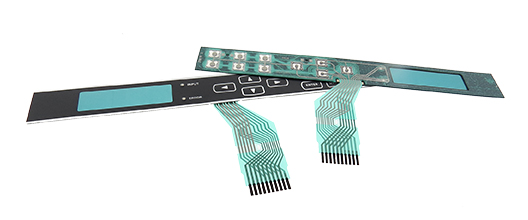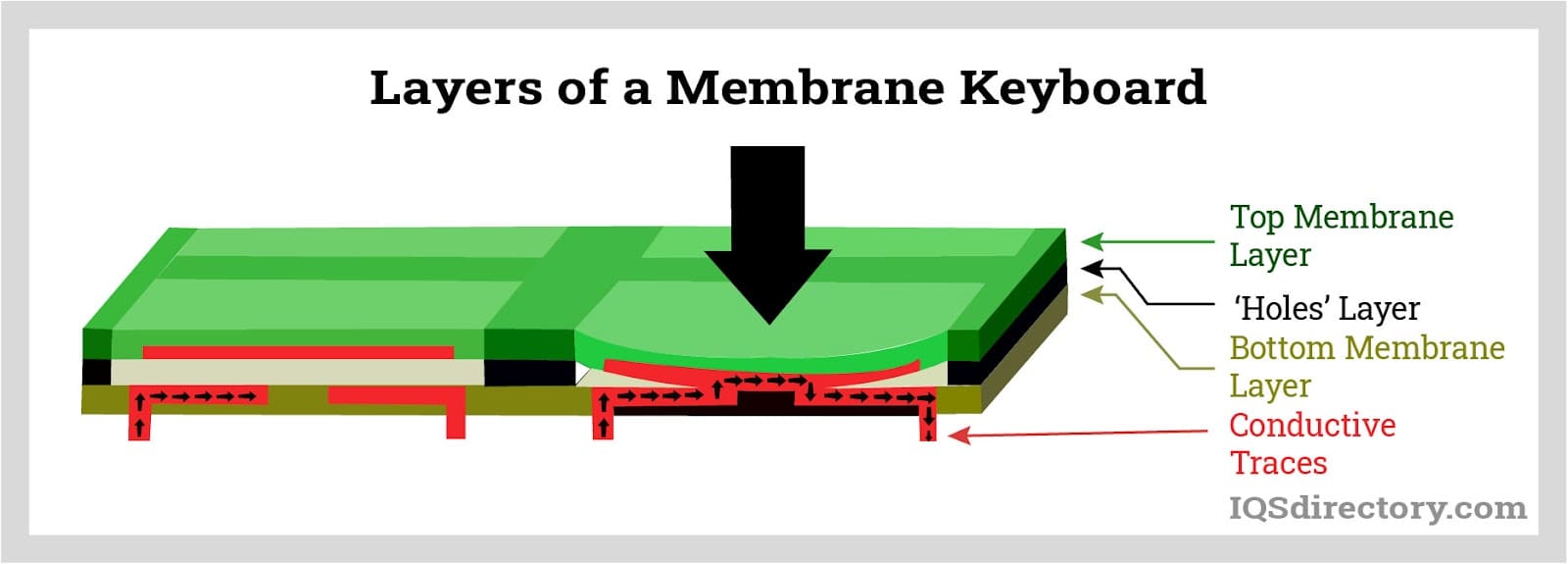Understanding the Significance of Membrane Switch Over in Modern Electronics
Membrane buttons are indispensable components in modern-day digital gadgets. They offer a mix of performance and design that improves customer communication. Their durable and lightweight nature makes them suitable for various applications. As markets progress, the need for customization and advanced features grows. Understanding how membrane switches over add to development exposes their relevance in shaping the future of electronic devices. What exists ahead for this modern technology?
The Essentials of Membrane Change Modern Technology
Often neglected, membrane layer button modern technology plays a necessary role in the modern electronics landscape. These gadgets, made up of numerous layers, act as interface for numerous digital products, varying from home home appliances to medical equipment. A typical membrane layer switch includes a visuals overlay, a spacer layer, and a circuit layer, which are meticulously constructed to create a practical interface.When pressure is related to the overlay, the circuit layer is completed, permitting signals to be transmitted to the device. This modern technology is known for its adaptability, making it possible for modification in style, form, and capability to satisfy certain customer requirements. Furthermore, membrane switches are lightweight and slim, making them ideal for applications where space is a costs. Their sturdiness and resistance to ecological aspects even more boost their allure, guaranteeing they can withstand rough conditions while maintaining functionality. Overall, membrane layer switch technology is essential to developing user-friendly and efficient electronic gadgets

Trick Benefits of Membrane Layer Switches Over
Membrane changes deal a number of key benefits that make them a preferred choice in numerous electronic applications. Their design permits a compact kind element, enabling manufacturers to develop lightweight and sleek tools. Furthermore, membrane layer switches are immune to dust, dampness, and chemicals, which enhances their toughness and durability sought after settings. The tactile feedback offered by these buttons can improve customer experience, making them very easy and intuitive to operate.Furthermore, membrane buttons can be personalized with varied graphics and colors, permitting special branding chances. The manufacturing procedure is generally economical, especially for high-volume manufacturing, as it decreases setting up time and simplifies style. Membrane switches over call for minimal upkeep, contributing to reduced total functional expenses. These benefits underscore their growing popularity in modern-day electronics, where dependability and straightforward interfaces are crucial.

Applications Throughout Numerous Industries
The adaptability of membrane switches over allows their extensive fostering across numerous markets. In the clinical field, they are generally utilized in analysis devices and patient surveillance systems, providing a sturdy interface immune to pollutants. The auto market utilizes membrane layer buttons for control panel controls, improving customer experience with sleek layouts that endure harsh problems. In customer electronic devices, they offer as control panels for tools such as microwaves and coffee makers, giving a straightforward user interface that is easy to tidy. The aerospace field employs membrane layer switches in cabin controls, where reliability and space effectiveness are paramount. Furthermore, the industrial sector leverages these switches in equipment and control systems to ensure robust operation sought after environments. This broad series of applications emphasizes the adaptability of membrane buttons, making them integral components in enhancing performance and customer communication throughout varied technical landscapes.
Customization and Design Versatility

Future Patterns in Membrane Switch Advancement
Arising patterns in membrane switch development suggest an expanding focus on improved capability and assimilation with clever modern technologies. As customer need for a lot more advanced digital devices boosts, producers are focusing on creating membrane changes that not only serve standard functional duties yet additionally integrate features like touch level of sensitivity, backlighting, and haptic feedback.Furthermore, improvements in materials are anticipated to boost toughness and environmental resistance, making membrane layer changes suitable for diverse applications in sectors such as health care, automobile, and consumer electronics. The combination of capacitive touch technology is most likely to end up being extra prevalent, permitting sleeker layouts and improved customer interfaces. membrane switch.Additionally, the surge of the Internet of Things (IoT) is motivating the growth of membrane layer changes that can interact wirelessly with various other devices, boosting interconnectivity. In general, the future of membrane layer switch technology check it out appears promising, driven by innovation and the pursuit of straightforward options
Frequently Asked Concerns
Exactly How Do Membrane Changes Contrast to Conventional Mechanical Buttons?
Membrane switches, being extra space-efficient and providing a sleek style, contrast with typical mechanical switches that provide tactile comments. The previous often feature customizable graphics, while the last generally assure durability and reliability in different applications.
What Products Are Commonly Utilized in Membrane Layer Change Manufacturing?
Membrane layer see this page switches are generally created making use of products such as polyester, polycarbonate, and printed conductive inks. These materials give responsiveness, flexibility, and toughness, making them ideal for numerous applications in digital gadgets and individual interfaces.
Can Membrane Layer Switches Over Be Fixed or Reused?
Membrane layer switches can frequently be repaired, particularly if small concerns occur, such as glue failing or surface damages. Total reuse is usually limited due to put on and prospective degradation of materials over time.
Exactly How Do Environmental Aspects Impact Membrane Switch Performance?
Ecological elements, such as temperature level, exposure, and humidity to chemicals, considerably influence membrane layer switch performance. Severe conditions can bring about degradation, affecting responsiveness and longevity, eventually compromising the performance of the tool in numerous applications.
What Is the Normal Lifespan of a Membrane Switch over?
The typical life-span of a membrane layer switch typically ranges from 1 to 5 million actuations, relying on factors such as usage regularity, ecological conditions, and the materials made use of in manufacturing, affecting toughness and performance durability. A normal membrane layer button consists of a graphic overlay, a spacer layer, and a circuit layer, which are thoroughly constructed to create a functional interface - membrane switch.When stress is used to the overlay, the circuit layer is finished, enabling signals to be transmitted to the gadget. The responsive responses provided by these switches can boost customer experience, making them easy and instinctive to operate.Furthermore, membrane layer buttons can be tailored with varied graphics and colors, permitting for one-of-a-kind branding chances. As consumer demand for much more advanced electronic gadgets boosts, suppliers are concentrating on developing membrane layer switches over that not just offer standard functional duties yet likewise include attributes like touch level of sensitivity, backlighting, and haptic feedback.Furthermore, developments in products are expected to improve sturdiness and ecological resistance, making membrane switches ideal for varied applications in industries such as medical care, automotive, and consumer electronic devices. The combination of capacitive touch innovation is likely to become much more common, allowing for sleeker layouts and enhanced customer interfaces.Additionally, the increase of the Internet of Points (IoT) is motivating the development of membrane layer changes that can interact wirelessly with various other gadgets, improving interconnectivity. Membrane buttons, being a lot more space-efficient and providing a streamlined layout, contrast with traditional mechanical buttons that offer responsive feedback